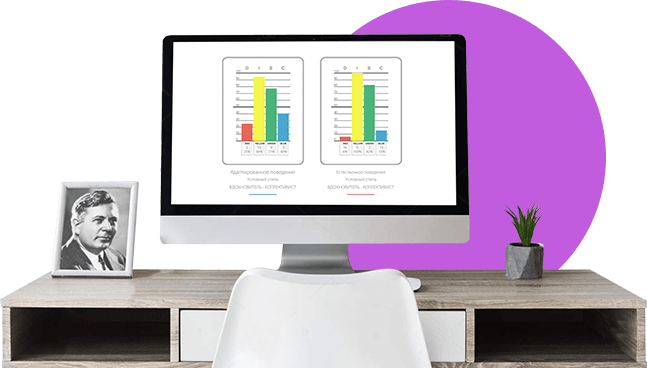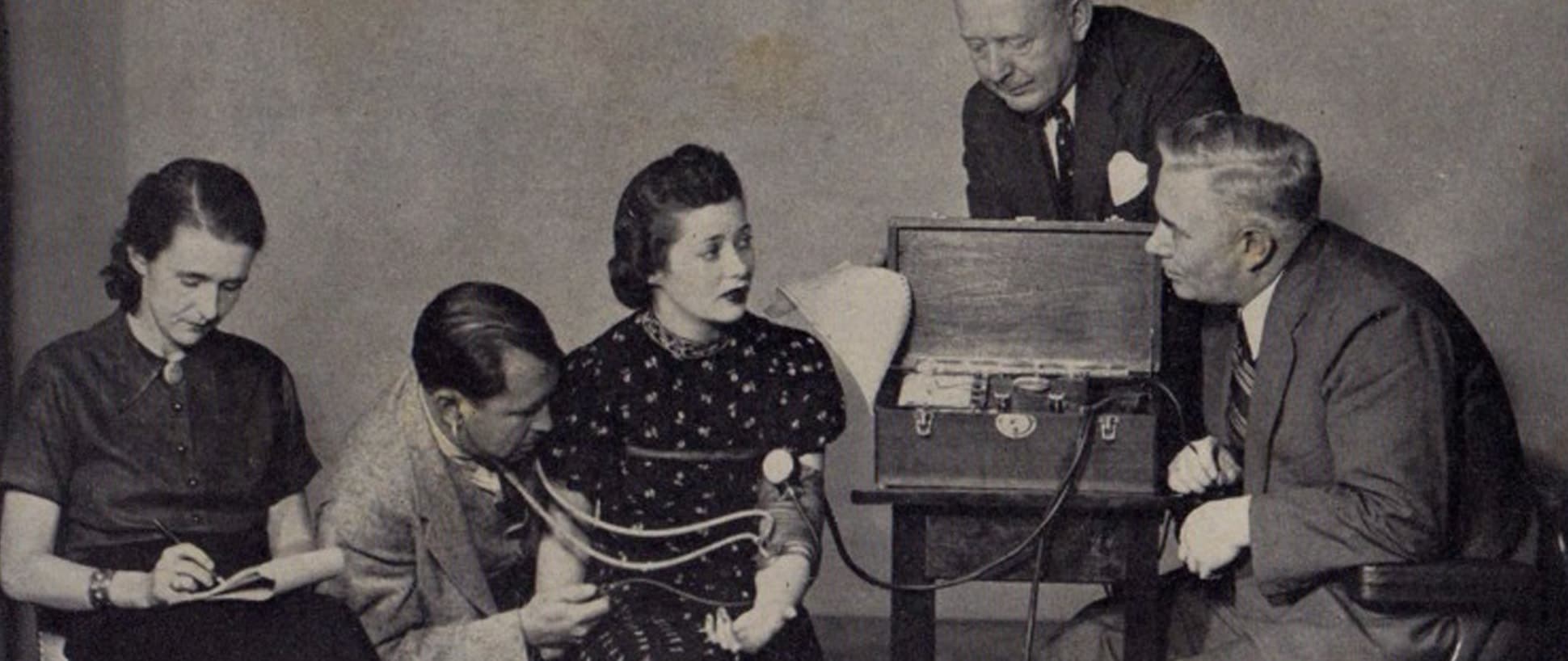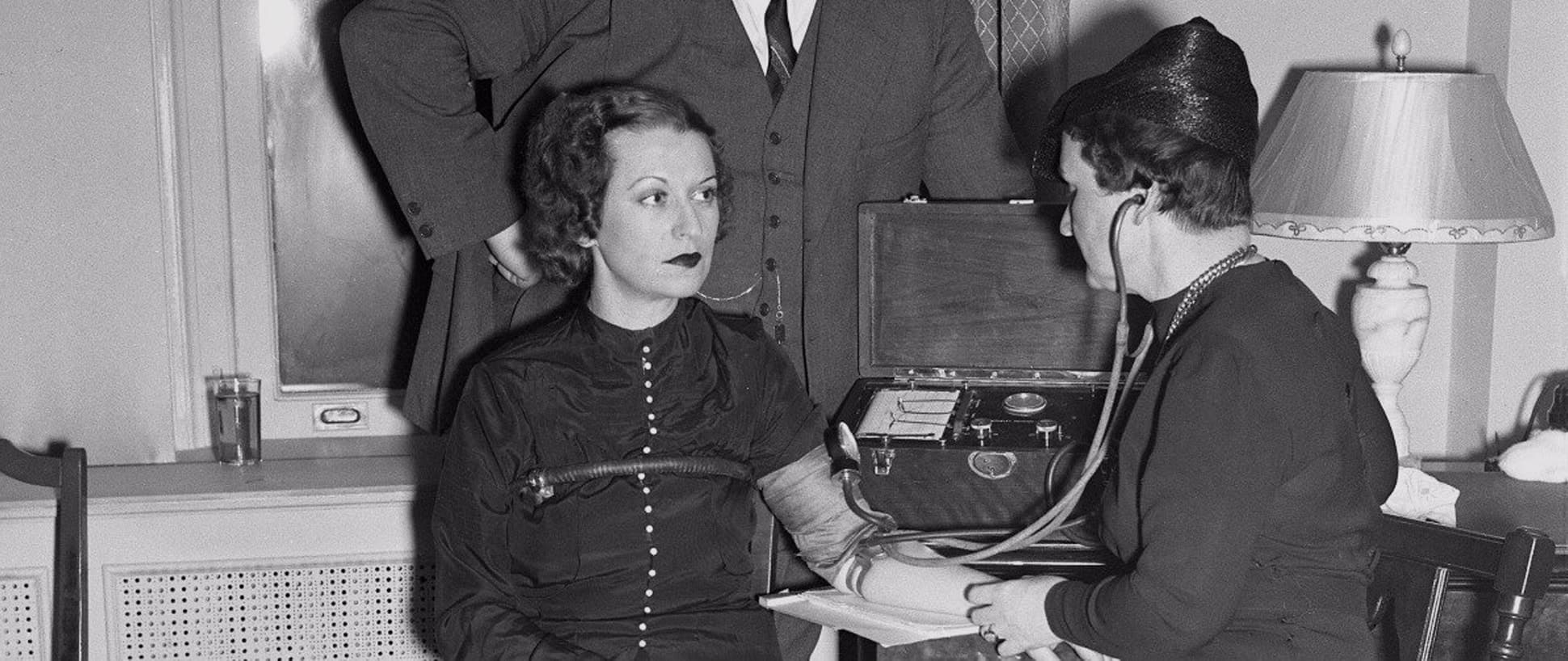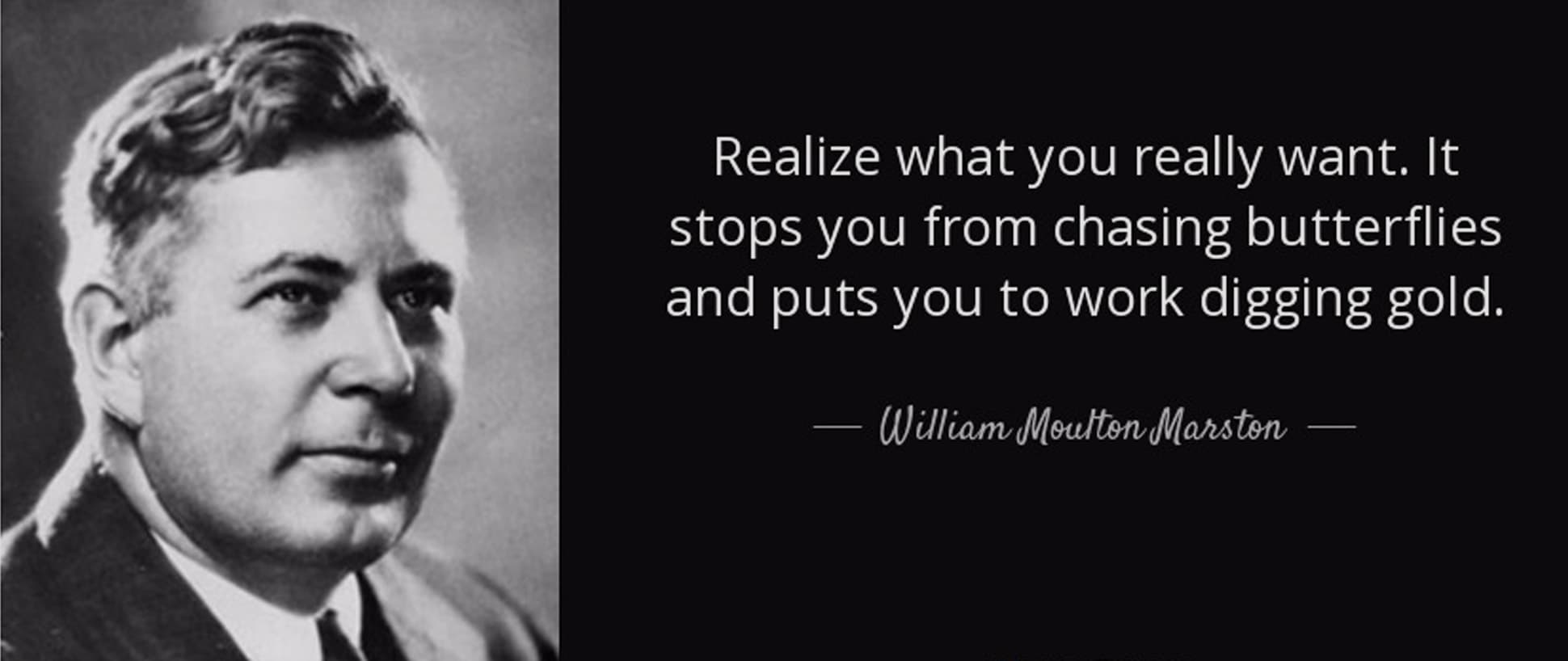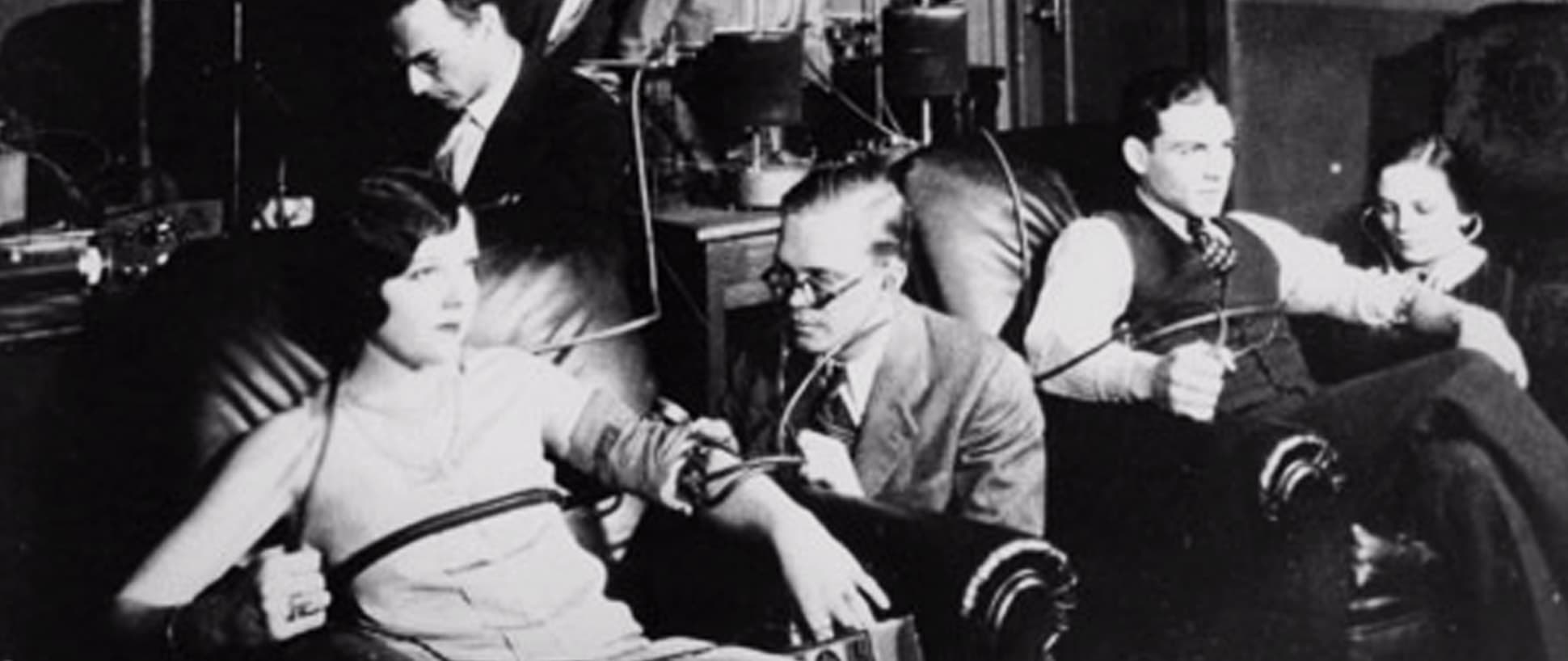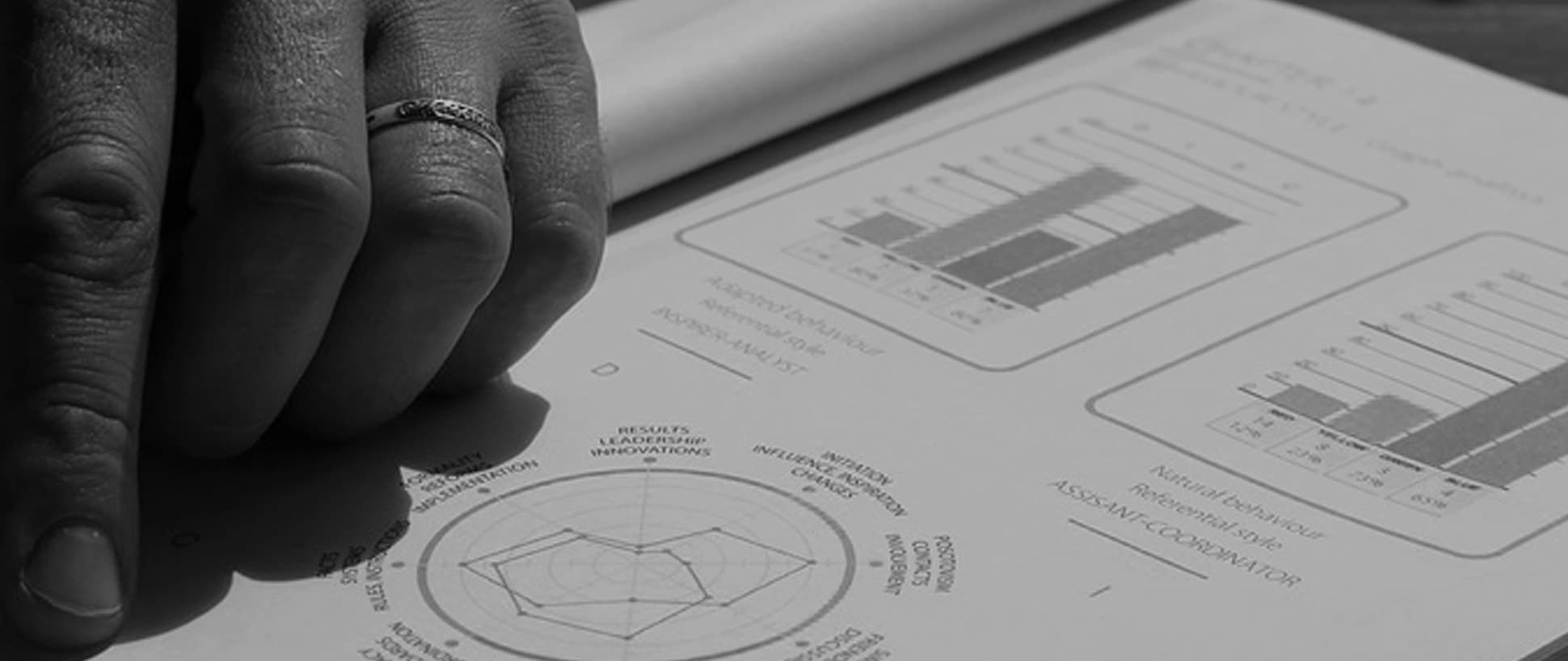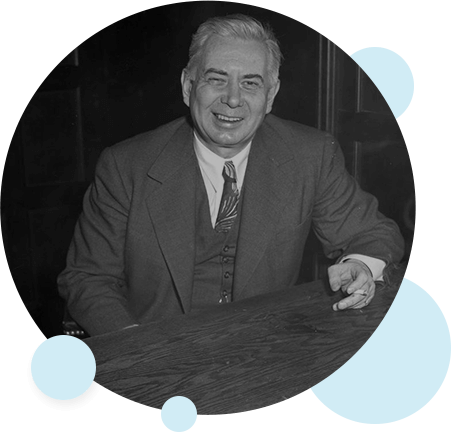DISC History
The DISC typology was developed and first published in 1928 when William Moulton Marston – Harvard University Professor
published his work «Emotions of Normal (regular) People». In this work Professor
defined DISC as language of behavior and observable emotions.
Therefore, DISC is a multidimensional concept, which may be referred to asnbsp;method, language, tool,
approach, typology…
The
At present tools originating from DISC Method are being employed all all over the world by a wide range of companies, including transnational corporations.
Owing to their transparency, functionality, accessibility and complex usability
Nowadays thanks to William Marston and his followers more than 80 % companies from the Top 500 list apply this method in their daily operations.
William Marston
In the course of his short but bright life William Marston, the author and theoretician of DISC Method wrote another meaningful for modern history work «The Lie Detector Test» ((1938) The lie detector test. New York: Smith.) Research made for Marston’s earlier work «Polygraph», had a significant impact on DISC Method forthcoming.
Marston is also famous in America as the author of comics «Wonder Woman» published in 1941 whose main character remains popular nowadays.
Being a genuine scientist, W.Marston used in his research complex approaches and his personal qualities such as pragmatism and observation skills.
FBI Case Learn moreThe fact that his wife’s pulse began to rush and her blood pressure was rising, when she was nervous, gave W.Marston a clue to lie detector creation.
Later on he conducted a series of scientific experiments involving thousands of people from focus-groups. In 1915 Marston composed a lie determining test based on systolic blood pressure measurements (first published in 1917).
(first published in 1917).
He noticed the link between physiological and behavioral reactions of an ndividual. The measurable indicators of body conditions were confirmed by visible human reactions to surrounding environment. This approach guaranteed DISC’s accuracy and supremacy over other typologies in regards to validity and complexity of describable behavior styles. As a result DISC crystallized into a harmonious independent theory, which was destined to be applied all over the world.
It may be claimed that William Marston was ahead of his time. The scientific world of that time was not ready to fully comprehend Marston’s ideas.
At present time the INSUNRISE Inc. representatives on a daily basis tackle a wide range of tasks to do with personality diagnostics and development. And this is the fulfillment of Marston’s dream, whose ideas originating from the beginning of
It is noteworthy that DISC typology was employed by the Professor during the consultations, which he gave in Hollywood. Today it is obvious that the overwhelming majority of Hollywood’s key characters were outlined with the help of DISC terms.
Psychophisiology in Business
In the beginning William Marston did not imply the system of DISC Factors measurement, as he could not foresee that his ideas will gain such a vast practical use.
DISC theory was rather in the state of a hypothesis rather than a business tool. The theory first experienced an extensive practical application after WWII, when it was used to adapt former soldiers to normal life. It was the time when DISC theory accumulated its statistical grounding.
Learn moreAs the computer era began to gain pace, the business realm requested more and more practical and concise assessment tools. DISC Questionnaire was created to satisfy these demands. It was developed on the basis of an earlier tool by Walter Clark — Activity Vector Analysis —AVA — (Walter Vernon Clarke, Basic Theory, Administration, and Application of Activity Vector Analysis, Barrington, R.I, 1949), who invented the key measurement algorithms of 4 behavior factors’ manifestation and
DISC Method Evolution
At the moment there are 50 independent assessment tools providers based on DISC Method all over the world.
The information presentation differs from one provider to another, so does the pricing policy. However, all providers are united by general postulates articulated by William Moulton Marston and his followers. To a certain extent it may be claimed that tools developed by different providers are substitutable. Nevertheless, if you take a closer look at these tools, you may discover that they differ from one another significantly.
Read moreThe Assessment System DISC INSUNRISE (ASDI) is an elaboration and a program with its roots in the intact DISC Method postulates enriched by a thorough research and best world practices. The ASDI gained international popularity and became the first choice HR tool for the most respected companies.
For the time-being DISC INSUNRISE has two major directions:
- Assessment, including Benchmark
- Communications, in the broadest sense of this word
Each direction falls into multiple practical tools.
INSUNRISE Psychometrix Inc., being a direct producer of tools and technologies related to DISC Method, delivers
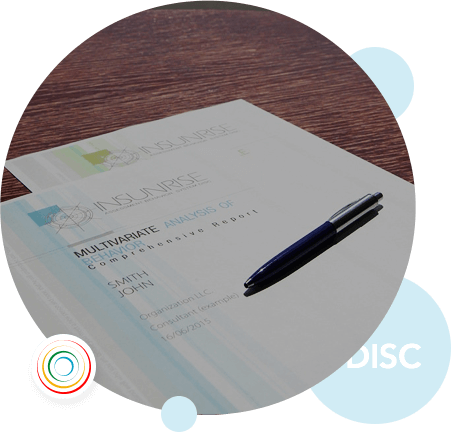 Read more
Read more
The Assessment System DISC INSUNRISE (ASDI) is an elaboration and a program with its roots in the intact DISC Method postulates enriched by a thorough research and best world practices. The ASDI gained international popularity and became the first choice HR tool for the most respected companies.
For the time-being DISC INSUNRISE has two major directions:
- Assessment, including Benchmark
- Communications, in the broadest sense of this word
Each direction falls into multiple practical tools.
INSUNRISE Psychometrix Inc., being a direct producer of tools and technologies related to DISC Method, delivers
The DISC INSUNRISE Method’s
Area of Measurement
In simple terms DISC Model measures behavior and observable emotions, which are associated with four behavioral factors:
-
1
Dominance
-
2
Influence
-
3
Steadiness
-
4
Compliance (with rules and norms established by other people)
With the help of the ipsative DISC INSUNRISE Questionnaire we can measure and translate into the language of understandable terms, so to speak digitalize such a complex category of human personality as behavior.
Practically the evaluation of such a broad concept as Behavior and Emotion unfolds a series of most essential parameters, which tell us HOW a person meets certain goals, what motivators stand behind his/her actions, what is the degree of his/her emotional lability. The same parameters predict human reactions, strengths and limitations; give an understanding of a certain employee’s behavioral competences and traits perspective for development and aspects requiring being intact.
Learn moreThe DISC Questionnaire most accurately measures the degree of manifestation and counter-influence of four behavior factors of a certain individual.
4 parameters or FACTORS of behavior typical of every human being with a unique degree of manifestation are far from being ephemeral. DISC Factors shape Behavior Styles of different people and provide a clear understanding of what we are in essence and how we are perceived by surrounding us people —i.e. Natural and Adaptive Styles of Behavior.
It is very important that DISC Behavior Styles are neutral in essence. This implies that DISC is not a clinical tool.
The DISC Questionnaire is a tool intended to measure the degree of the 4 Factor’s manifestation and
For instance «strong communicative skills», being a neutral characteristic, will be highly desirable, if the job requires vast socialization with people. The same characteristic may be absolutely useless and even harmful in matters requiring concentration on details, data analysis, compliance with certain procedures, conveyor work.
One Person —Two Styles of Behavior
The primary result of the INSUNRISE Assessment is the composition of two DISC graphs —responder’s Natural and Adaptive Style of Behavior, which show the percentage of the 4 Factors’ manifestation: Dominance, Influence, Steadiness and Compliance. Later on the ASDI System analyses and interprets these graphs into accessible clear texts, scales and graphical diagrams.
After reading the generated Reports, it becomes clear what a person is like in reality and what he/she wishes to come across as.
The ASDI System captures two major aspects of human behavior — Natural and Adaptive. This gives the System considerable advantages over the majority of methods, tests and
Most aspects of our behavior are part of our innate «nature», others are the result of our
For the most part the behavior of people may be described with the help of the 4 Factors — D.I.S.C. — combinations.
The behavior of different people may be grouped into several categories based on their similarities. However, DISC does not limit the amount of possible style variations down to 16 or 32, as do the popular on the market MBTI and OPQ tools. From our point of view this may be seen as a serious limitation or even discrimination.
The DISC Questionnaire is able to construct and analyze thousands of possible behavior styles of people in their two major incarnations — Natural behavior and mask behavior, i.e. the Adaptive one.
Our style of behavior is to a certain extent hereditary predetermined on the one hand, and on the other determined by our environment and our reciprocity with this environment. Based on the evaluation of the manifested behavior styles, one may draw a behavioral portrait of an individual.

Adaptive Behavior
(Graph 1)
Adaptive behavior implies our «professional mask» or the behavioral style which we find necessary and desirable to demonstrate to others. Adaptation, as a rule, is a less intuitive manifestation of ours, and it may be completely inconsistent or, on the contrary, resemble our natural style.
The Adaptive Style of behavior depicts a person’s ability to more consciously adapt his/her behavior to the specific environment he/she finds him/herself in. If we ask a candidate to fill in the questionnaire keeping in mind not his/her work experience, but rather his/her family life, where he/she plays the role of a parent, then on Graph I we see the behavior that the responder considers appropriate in order to perform in this role successfully. The Adaptive Style CHANGES more quickly and easily than the Natural one.
To a ertain extent every one of us adapts his/her behavior to the conditions of the surrounding environment including the situation at work. In this sense adaptation may be under certain conditions regarded as our instrument of efficient interaction with people and environment.
Learn more
Natural Behavior
(Graph 2)
Natural behavior as a rule is less conscious than the adaptive one. It seems fair to say that a person behaves naturally, when he/she does not think of his/her manner of behavior. Graph II of the INSUNRISE Reports is more informative for it captures the Natural Style of behavior and visualizes our true «self».
Under normal circumstances the Natural Style does not change much in time, which was pinpointed by the
In the course of our life we develop a behavioral style as a strategy of junction with the surrounding environment. This strategy appears to us justified and appropriate, whereas for others it may come across as
It is interesting that the change of one’s Natural Style is connected with the reconstruction of one’s inner self and the establishment of new neural connections in the brain. This change is possible, but it is often related to transforming events in the life of an individual. The pace with which this change takes place depends on the pace with which these transforming events affect us — sometimes slowly and sometimes in the blink of an eye.
Temporary adaptation of behavior may be the key to complicated life situations.
The widening of
Each of us prefers it when other people address us using the appropriate from our viewpoint manner of communication, in other words speak «our» language.
The research shows that the unique communicative style of every individual stems from the characteristic of him/her style of behavior.
If in the course of communication we choose the right tone harmonious to our partner’s behavioral style, then he or she opens to us his or her «communicative door». This gives a chance for positive reciprocal communication. In most cases people tend to act and react in accordance with their Natural (intrinsic) Style of behavior, however, there is a way to develop the ability for conscious behavioral adaptation.
ПIn practice this information helped to create the ASDI ® System of communicative preferences of people, which became a powerful and popular on the market
We have to keep in mind that almost any communication requires us to adapt,
Within the framework of DISC Method 80% of all professional competences fall under the category of the behavioral ones.
Behavior is a complex set of competences partly developed in the course of our lives and partly inherited. From the evolutionary point of view this set of competences helps the human race to survive as a species. Therefore, the survival competences are much often related to Soft Skills, rather than Hard Skills.
It is noteworthy that such characteristics as aptitude for information analysis, ability to convince, attentiveness to details are part of the innate behavioral style rather than skills developed consciously in the course of our lives.
Therefore, we claim that strictly professional competences are important but not crucial. Just think about it, 80% of your work performance both efficient and inefficient consists of your behavior.
Quite often behavioral skills turn out to be more important than actual professional skills. Most people can master new technical skills, or the
The answer is easy. We do not realize our style of behavior.
Only conscious voluntary adaptation of behavior depending on various tasks and communicative situations may be considered an instrument of efficiency.
The core of the DISC Assessment System are DISC Graphs. The analysis of Graphs provides an abundance of detailed information on a certain individual, on his/her behavior, preferences, motivations, dispositions, limitations and strengths.
ВQuite complicated calculations and interpretations of DISC Styles are presented by the ASDI in a form of PDF Reports accessible to people without special training.
Behavior Style Reports may be compared to mobile phones. Just recently we did not even think of their existence, and now we cannot imagine life without them.
The INSUNRISE Tools measure over 200 competences and present the assessment data in a form of 40 themed chapters, which include development plan, interview questions, description of mask (Adaptive) style of behavior
See the list and contents of available themed chapters.
The INSUNRISE Reports give you the key to exhaustive information, which helps you make informed decisions.
Executives gain an irreplaceable tool, which they quickly get used to in everyday work.
Leader Opportunities
Here in INSUNRISE we are well aware that leaders may possess very diverse experience, which makes them stand out of the crowd. But the key thing here is the level of their
The knowledge of behavior styles is a powerful instrument that makes it possible not only to improve understanding and interaction between employees and their executives, but also boost individual development of people, who decided to use the DISC INSUNRISE Assessment System ® .
Executive employees get an opportunity to lead their teams consciously rather than intuitively, choosing the best strategy of behavior suiting their subordinate workers. Quite often this is the reason for company’s success or failure.
Learn more about teambuilding according t DISCThe DISC Typology and Styles of Behavior
Nowadays DISC appears to be the most popular HR tool employed by companies worldwide in order to evaluate employees’ behavior. The key aspiration here is to improve interaction inside teams and gain an insight into the structure of various communicative styles.
Learn moreThe American scientist, Dr. William Moulton Marston, Sc.D. of Harvard University (May 9, 1893 — May 2, 1947), authored the method.
In 1928, he published, «The Emotions of Normal People», which outlined DISC theory, and then formed the basis of the modern DISC behavior model.
W. Marston argued that the behavior of any normal person can be described in terms of two criteria:
- How someone perceives the environment in which they act: Favorable / Unfavorable
- How someone acts and eacts to specific situations: Actively / Passively
If we present these criteria in the form of two axes, then their intersection forms four quadrants, each of which corresponds to one of the four basic factors of behaviour:
-
1
Dominance
Function: how we solve problems and overcome difficulties -
2
Inducement (influence / persuasion)
Function: how we influence others, convince them -
3
Steadiness (stability)
Function: what rhythm of activity is peculiar to us and how it relates to change -
4
Compliance
How we respond to norms and rules set by other people
According to W. Marston, each person’s behavior, with varying degrees of intensity, shows signs of each of the four basic factors of behavior. Moreover, the style of human behavior is a product of the instantiation of DISC factors in their totality, with an intensity peculiar to a particular individual.
In turn, this measurement (assessment) and analysis of DISC factors makes it possible to describe objectively different types of behavior, combining the features of the four basic styles. The description concerns both more conscious or Adapted behavior and less conscious intuitive or Natural behavior.
Thus, DISC INSUNRISE model of assessment tools is designed to measure the degree of instantiation of factors in the DISC behavior of individuals. At the same time it takes into consideration the slightest fluctuations and changes in the scoring of DISC factors, as well as all their possible combinations and interactions and assigns 2 styles of human behavior — Natural and Adapted.
The DISC model does not reduce all psychotypes to 16 or 32 like other known techniques; rather it generates and interprets thousands of graphs. Th technique indicates that there are only 60 basic, most common styles. The number of variations in different styles on the DISC is reduced to a staggering amount. DISC INSUNRISE ® Assessment System is capable of generating more than 19 thousand different graphs associated with behavioral styles.
This degree of refinement in measurements means you can identify the most specific, individual traits of a person, to measure their professional competence related to behavior, to predict the best type of activity for them, their motivators, strengths and limitations. This is one of the fundamental differences between DISC and other techniques..
DISC is virtually inexhaustible in its potential application, and is clearly a comprehensive method for working with human resources.











